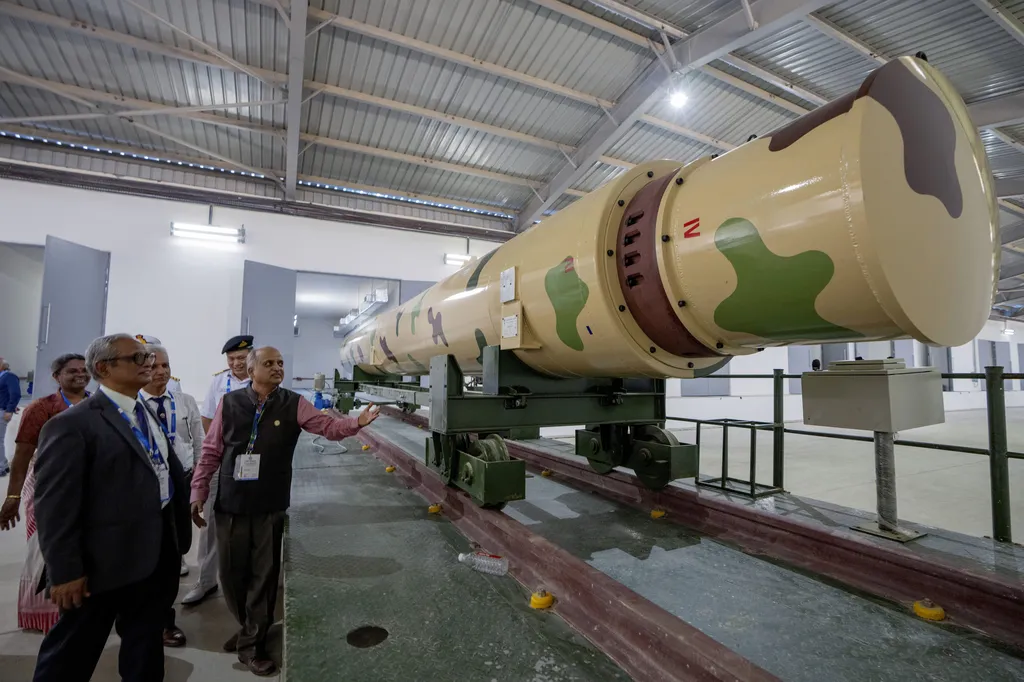India’s defence manufacturing ambitions took a significant leap forward as Defence Minister Rajnath Singh and Uttar Pradesh Chief Minister Yogi Adityanath flagged off the first batch of BrahMos missiles produced at the newly operational BrahMos Integration and Testing Facility in Lucknow. The facility, part of the Uttar Pradesh Defence Industrial Corridor, began operations just five months after its virtual inauguration, marking a rapid and strategic advancement in India’s indigenous defence capabilities.
Singh described the BrahMos as more than just a missile, calling it a “symbol of India’s growing indigenous defence capabilities.” The supersonic missile, renowned for its speed, accuracy, and destructive power, has become a cornerstone of India’s military arsenal. “Every inch of Pakistan’s territory is now within the reach of BrahMos,” he declared, referencing Operation Sindoor, where the missile reportedly played a decisive role. “The operation was just a trailer. It has made Pakistan realise what might follow,” he added, underscoring the missile’s strategic deterrence.
Built at a cost of ₹380 crore, the 200-acre facility in Lucknow is set to produce around 100 missile systems annually. Singh emphasised that the project is not only a strategic asset but also a catalyst for employment and economic development in the region. From the next financial year, the unit is expected to generate a turnover of ₹3,000 crore and contribute around ₹500 crore in GST. The Defence Minister also revealed that BrahMos Aerospace has signed export contracts worth approximately ₹4,000 crore with two countries in the past month, signalling growing international demand for the missile system.
Singh stressed the importance of self-reliance, highlighting the need to develop indigenous supply chains to ensure India’s defence independence. “We must develop all types of technologies within India so that our supply chain remains secure and independent,” he said. The government is working on a roadmap to integrate small and medium enterprises into the defence production ecosystem, fostering broader economic growth and technological advancement.
Adityanath hailed the development as a milestone in India’s journey towards Aatmanirbharta (self-reliance). “The BrahMos missile is a symbol of India’s strength and self-sufficiency,” he said, adding that over 15,000 youths have already secured employment through initiatives under the Defence Corridor. The BrahMos Integration and Testing Facility in Lucknow is the first in the Defence Corridor to handle the entire process—from assembly to testing—of a strategic missile system, positioning the region as a hub for defence technology and knowledge exchange.
During the visit, Singh and Adityanath inaugurated the Booster Building and reviewed key components of the missile production process, including the Airframe and Avionics section, Warhead buildings, and the BrahMos simulator. A demonstration of the mobile autonomous launcher and booster docking process was also organised, showcasing the facility’s advanced capabilities.
Director General of BrahMos Aerospace, Dr Jaytirth R. Joshi, handed over a GST cheque of approximately ₹40 crore to the Chief Minister, underscoring the facility’s revenue potential. As India continues to strengthen its defence manufacturing sector, the BrahMos Integration and Testing Facility stands as a testament to the nation’s commitment to innovation, self-reliance, and strategic autonomy.

